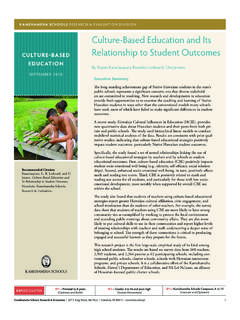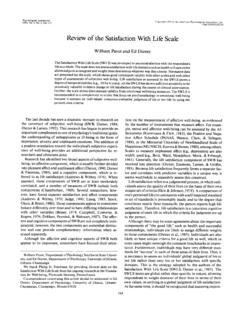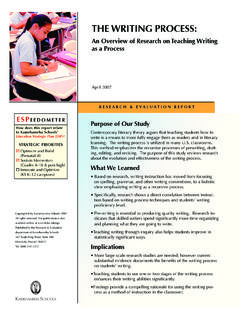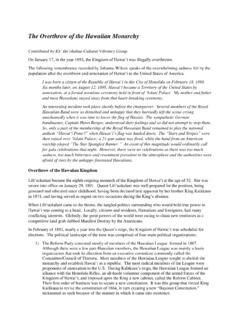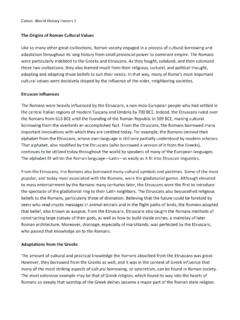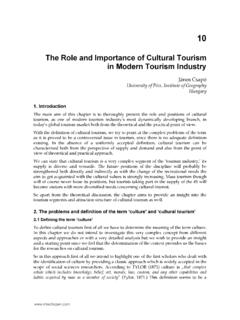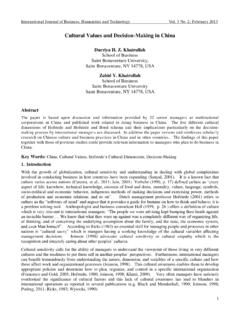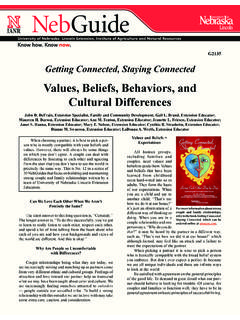Transcription of Integrating Cultural Values Into Mental Health Treatment
1 159H lili: Multidisciplinary Research on Hawaiian Well-Being (2011)Copyright 2011 by Kamehameha Cultural Values into Mental Health TreatmentBarry Carlton, Deborah A. Goebert, Cathy Kaheauilani Bell, Michelle Horton, Iwalani R. N. Else, Marsha Marcinowski, and Lynn Yamadacorrespondence may be sent to: deborah a. Goebert, department of Psychiatry, John a. Burns School of Medicine University of Hawai i M noa, 1356 lusitana Street 4th Floor, Honolulu, Hawai i 96813 Email: authors review existing literature on the Mental Health needs of adolescents, resilience factors, and Cultural competency. A Cultural integration program for adolescents (ages 12 to 18) is presented, and case examples are illustrated to provide preliminary evidence that Integrating culture into Treatment contributes to greater engagement, meaningfulness, resilience, and wellness for Native Hawaiian youth with severe Mental illness.
2 In addition, Integrating culture assists clini-cians in assessing Treatment response and can potentially improve outcomes. Youth programs should consider Integrating Cultural Values into Treatment for Mental Health problems. 160H lili (2011)He p ko a kani coral reef that grows into an island. lelo No eau (Pukui, 1983, no. 932)Metaphorically, this proverb suggests that a person begins in a small way and gains steadily until she or he becomes firmly established. In their past travels around the Pacific, the Hawaiians would pass by many coral heads that the navigators would mark in their memories and pass on to their apprentices. Eventually, they noticed these small coral heads would grow into full islands, and so comes the insightful wisdom that we cannot expect to be fully mature and successful right away.
3 The coral heads must also weather storms and turbulent oceans. Therefore, we all start small, we encounter turmoil, and over time, like a coral head, we will mature and reach our has been described as a phase of life beginning in biology and ending in society (Petersen, 1988). It is a period of rapid physical transitions in body proportions and hormonal changes. These biological changes influence and are influenced by psychological, social, Cultural , and historical contexts (Gottlieb, 1992; Lerner, 1998). For example, early pubertal maturation was linked to delinquency in adolescent girls who attended mixed-sex schools (Caspi, Lynam, Moffitt, & Silva, 1993) or have older friends (Stattin & Magnusson, 1990). During this phase, there is continual change and transition between individuals and their contexts (Lerner & Galambos, 1998).
4 These changing relations constitute the basic process of devel-opment in adolescence. They underlie both positive and negative outcomes that occur during this period. For youth with Mental illness, it can be a protracted period of storm and stress. In this article, we describe a Cultural integration program devised to engage youth in their learning and Treatment , gain insight into their lives, increase their resilience and well-being, and, ultimately, help them to attain their | Cultural Values ANd Mental HEAltHYouth in NeedMental Health is often considered the most important component of adolescent Health because so many youth experience Mental Health problems that interfere with their development and daily life activities (Prince et al., 2007). The National Institute of Mental Health estimates that one in five children and adolescents in America may have a Mental Health disorder (Merikangas et al.)
5 , 2010). Andrade et al. (2006) reported the first prevalence study of Mental disorders among indigenous and nonindigenous youth in Hawai i. Overall, indigenous Hawaiian youth had higher rates of Mental illness than non-Hawaiian youth ( vs. , respec-tively) when controlling for gender, and girls had higher rates than boys ( vs. , respectively) when controlling for ethnicity. These findings were primarily the result of the significant differences in rates regarding anxiety disorders. However, boys had significantly higher rates of substance abuse than girls, with indigenous Hawaiian boys having the highest rate and non-Hawaiian girls having the lowest rate. Furthermore, meta-analyses comparing indigenous Hawaiian rates with other groups demonstrated that indigenous Hawaiians follow similar diagnostic trends as Native American and other high-risk youth.
6 In the general population, major Mental illness affects approximately 1 in 10 youth, with 2 per 1,000 children and adolescents under 17 years of age being admitted to a hospital for Mental Health Treatment (Case, Olfson, Marcus, & Siegel, 2007; Muroff, Edelsohn, Joe, & Ford, 2008). This type of information is not available for indigenous youth. Given the developmental implications of this phase of life, during which psychological, socioemotional, cognitive, and vocational pathways are being set, it is not surprising that Mental disorders can seriously limit potential (McGorry, Purcell, Hickie, & Jorm, 2007). Associated with Mental disorders among youth are high rates of school failure, impaired or unstable employment, and poor family and social functioning, leading to dysfunction and disadvantage throughout their life span.
7 Given the high rates of Mental illness among indigenous Hawaiian youth, it is not surprising that they have higher rates of delinquency, incarceration, interpersonal violence, suicide attempts, substance use, teenage pregnancy, and high school dropouts (Alu Like, 1985; Chesney-Lind et al., 1992, 1995; Else, Andrade, & Nahulu, 2007; Gao & Perrone, 2004; Goebert & Birnie, 1998; Hishinuma et al., 2001, 2005; Kana iaupuni, Malone, & Ishibashi, 2005a, 2005b; Office of Hawaiian Affairs, 1998; Spoehr et al., 1998; Yuen, Nahulu, Hishinuma, & Miyamoto, 2000).162H lili (2011) Treatment EngagementFor Health practitioners to facilitate engagement of youth in Treatment , they must not only be competent in Treatment modalities but also be culturally competent. Competence refers to the application of knowledge and the interpersonal and decision-making skills expected for the practice role (National Council of State Boards of Nursing, 1996).
8 Cultural competence refers to accepting and respecting differences and reinforcing the strengths of the patient, family, community, or population in the process of engagement (Betancourt, Green, Carrillo, & Ananeh-Firempong, 2003). To be culturally competent means to continually assess oneself regarding culture, to have a regard for and attention to the dynamics of difference, and to engage in ongoing development of Cultural knowledge, resources, and flex-ibility within service models to work toward better meeting the needs of minority populations (Substance Abuse and Mental Health Services Administration [SAMSHA], 2000). In 2000, SAMSHA released its Cultural Competence Standards in Managed Care Mental Health Services. The principle of Cultural competence indicates attaining the knowledge, skills, and attitudes to enable administrators and practitioners within systems of care to provide effective care to diverse popula-tions, that is, to work within a person s Values and reality conditions.
9 Recovery, rehabilitation, and personal well-being are more likely to occur when managed care systems, services, and providers have and utilize knowledge and skills that are culturally competent and compatible with the backgrounds of children and families from the four underserved, underrepresented racial/ethnic groups and their communities. The four core groups are Hispanics, American Indians/Alaska Natives, African Americans, and Asian/Pacific Islanders. Cultural compe-tence acknowledges and incorporates variance in normative acceptable behaviors, beliefs, emotions, and Values in determining an individual s Mental wellness/illness, as well as incorporating those variables into assessment and Treatment . Continuing education is essential to ensure Cultural competence among clinical staff and to promote effective response to the Mental Health needs of patients.
10 Core areas include the following: understanding consumer populations backgrounds, clinical issues, how to provide appropriate Treatment , and agency/provider role; communicating effectively across cultures; providing quality assessments; formu-lating and implementing quality Treatment plans; providing quality Treatment by using one s self and knowledge in the Treatment process; and having nonjudg- Mental attitudes. Cultural competency is not just a form of social justice; it is 163 CarlToN | Cultural Values ANd Mental HEAltHalso social action. If practitioners embody Cultural competency at all times, their relationship with the people they serve will reflect respect and affirm the gifts, strengths, and aspirations of individuals, families, and communities. Building ResilienceResilience typically refers to the positive capacity to cope with adversity, the ability to bounce back after a disruption, or an adaptive system that uses exposure to adversity to increase capacity for dealing with future negative events (Carlton et al.)

